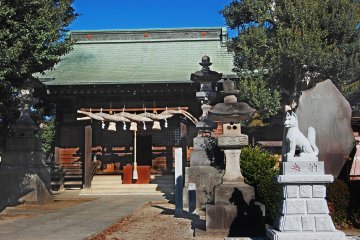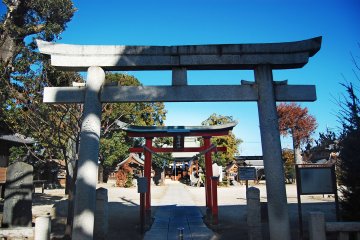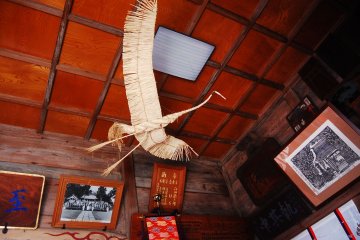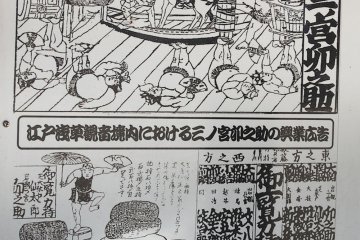For those of you who have traveled to Kyoto, you might know this kind of temple, where hundreds of red torii line the statue of kitsune or fox. Fushimi Inari-taisha in Kyoto is the head shrine of the many thousands of Inari shrines across Japan. One of these Inari shrines I found while strolling around Okegawa city in Saitama. It's a very interesting place to visit. It's a place where you can even find 610kg of stone (daibanjaku), once been lifted by a Japanese sumo wrestler, known as rikishi.
Inari is a famous deity for shrines and Buddist temples in Japan. According to the 1985 survey by the National Association of Shinto Shrines, there are 32.000 Inari shrines throughout Japan.
Just like any Inari shrine, the first thing that greets you while visiting is the charming red torii or gate. You can also see the entrance statue of a kitsune, or fox. Kitsune are often adorned with red yodarekake (votive bibs) but when I visited this shrine in Okegawa, unfortunately I didn't see them on this occasion. The statues typically come in pairs, to represent male and female.
After passing the torii, you will see the haiden or hall of worship. The haiden is a brown wooden building with a green roof. Before the haiden, you will see two stone lanterns. Just like other shrines, you can find the choyuza, a purification font for you before going to pray at the worship hall.
What is interesting about this Inari shrine is its unique story. You can find the daibanjaku located on the right side of the worship hall. A stone of 610kg and dimensions of 121cm x 54cm x 75cm, once lifted by the strongest man from the Edo period in 1852. This sumo wrestler was from Sannomiya village (or Sannomiya Unosuke), although now it's called Koshigaya village. There is some artwork that illustrate this event in the worship hall itself and this unique story helped turn this stone in to one of Okegawa city's unique cultural assets.
It's fairly easy to reach this Inari shrine, by walking from Okegawa station for about 10 minutes. Okegawa offers the Nakasendo (Edo period route that connected Kyoto and Tokyo) historical experience and this Inari shrine is one of the highlights. For that reason, I traveled to Okegawa and stayed at Hotel Route Inn Ageo to make my journey easier.















